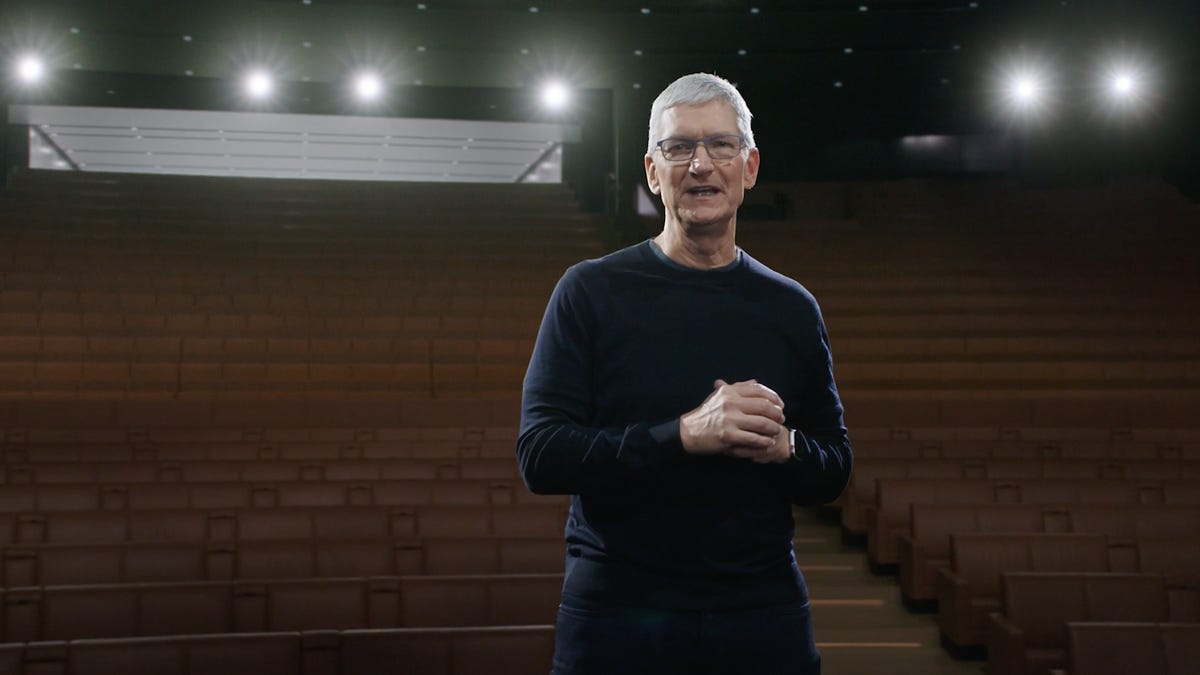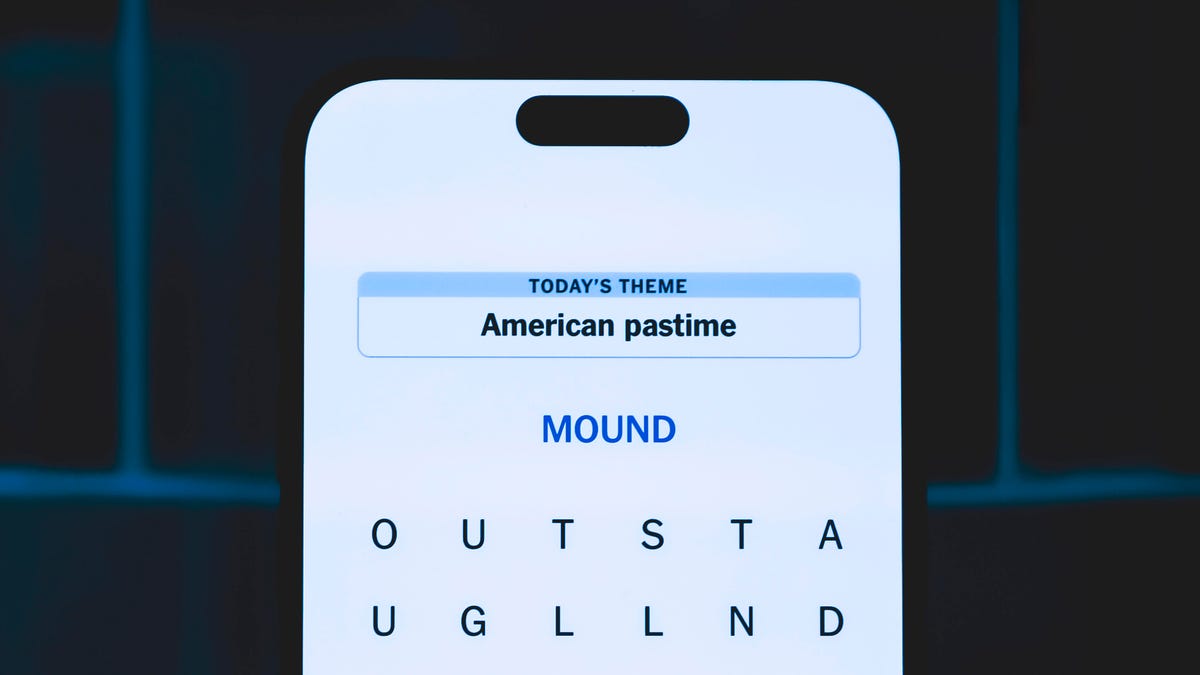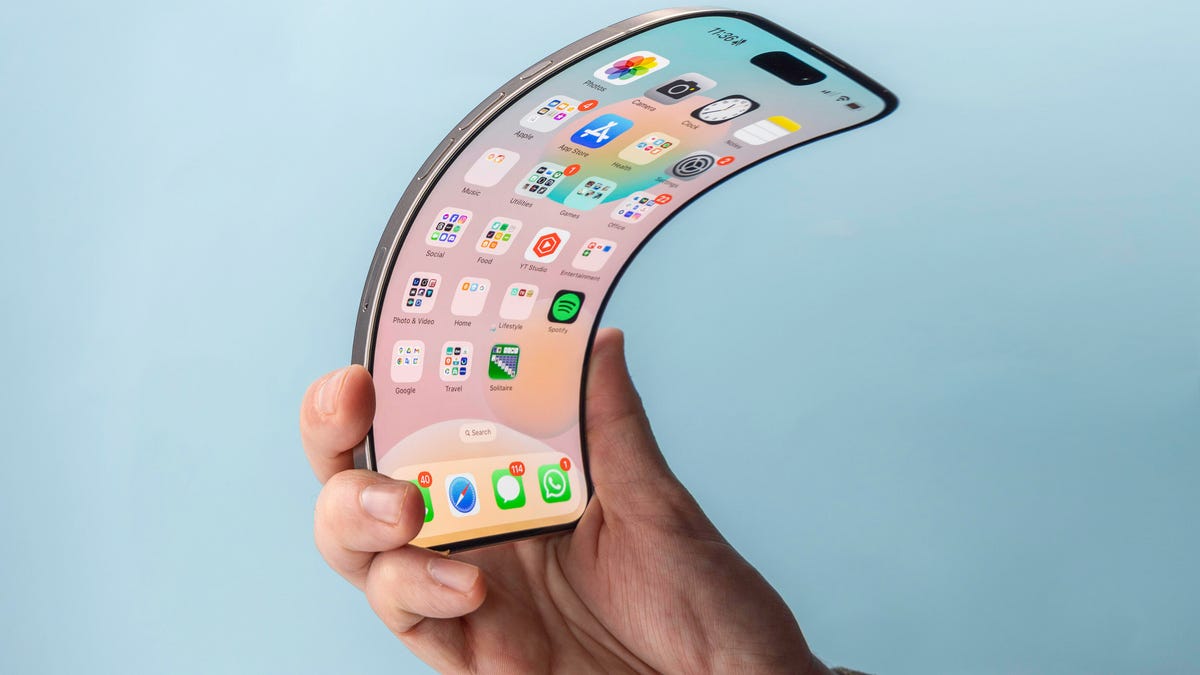Technologies
Apple to Use New Chips Made in Arizona
«This is an incredibly significant moment,» said Apple CEO Tim Cook.

Apple will be using microchips produced by the Taiwan Semiconductor Manufacturing Co. factory based in Phoenix, CEO Tim Cook said Tuesday at the event for the facility’s upcoming expansion.
«Today is only the beginning,» Cook said. «Today we’re combining TSMC’s expertise with the unrivaled ingenuity of American workers. We are investing in a stronger, brighter future, we are planting our seed in the Arizona desert. And at Apple, we are proud to help nurture its growth.»
President Joe Biden and chief executives from AMD and Nvidia were also in attendance at the event.
«Apple had to buy all the advanced chips from overseas. Now they’re going to bring more of their supply chain home,» Biden said. «It could be a game-changer.»
TSMC is already building a chip fabrication plant, or fab, in the Arizona city — a $12 billion investment to make processors with the newer 5-nanometer manufacturing process it uses to make iPhone processors and other chips today. At a ceremony to mark the arrival of the first chipmaking equipment at the fab, it announced it’ll also make improved 4nm chips there and build a second fab to make significantly more advanced 3nm chips. The total investment: $40 billion.
The new chips won’t be powering next year’s iPhones, though, because building fabs takes a long time. TSMC broke ground on its 5nm fab in April 2021, and it won’t start producing chips until 2024. The newly announced 3nm fab won’t make chips until 2026.
Customers of TSMC currently rely on fabs in Taiwan, but modern fabs in the US could help ensure a US supply of processors too. More US chip manufacturing also can encourage a broader manufacturing ecosystem, including some business partners that supply chipmakers with equipment and materials and others that test, package and assemble chips after they’re made.
It’s unlikely the US will match the breadth of Asia’s electronics manufacturing anytime soon, but if politicians and businesses get their way, the semiconductor industry might avoid the fate of industries like steelmaking and textiles that largely vanished from the US.
Processors are critical to just about every modern product and industry, not just phones and laptops. They are used to control cars, refrigerators, military hardware, toys and power plants. A global chip shortage triggered by the COVID pandemic kept products like Ford F-150 pickups and Sony PlayStation 5 consoles out of customers’ hands and revealed just how vulnerable global supply chains are.
The TSMC expansion comes weeks after Micron’s $20 billion «megafab» investment in New York announced in October, which ultimately could reach $100 billion, and Intel’s announcement of $20 billion in two new fabs outside Columbus, Ohio, which also could reach $100 billion investment this decade.
More disruptions are possible. Russia’s invasion of Ukraine showed that political borders aren’t necessarily fixed. That has particular importance to Taiwan, the island nation that China claims as its own and that’s home to most of TSMC’s manufacturing.
All these forces combined to nudge Congress into passing the CHIPS and Science Act. It promises nearly $53 billion in subsidies for fabs, research into the semiconductor technology that underpins processors and spending to train future workers. And it’s a much more assertive industrial policy than the US had in the past, when most chipmaking moved overseas to its current stronghold in Asia.
«We saw during the pandemic that something that we took for granted, global supply chains, were actually a key vulnerability for economic and our national security,» Ronnie Chatterji, acting deputy director for industrial policy at the White House’s National Economic Council, said in a press briefing.
Biden lobbied for the CHIPS funding and has touted it often as a success in rebuilding US manufacturing abilities. The idea is to try to encourage private companies to make their own investments knowing they’ll find an economically favorable climate.
«This is a marked departure from the economic philosophy that has governed for much of the last 40 years in this country,» said Brian Deese, director of the National Economic Council. With the old strategy, «you said that government should get out of the way, cut taxes for large companies, cut regulations, and assume that the American economy and American families would benefit.»
The new policy can mean a subsidy of about $3 billion to boost fab construction that otherwise costs about $10 billion. That makes the US more competitive with Asian countries like Taiwan, South Korea and China, Intel CEO Pat Gelsinger has said. Intel has a major presence in Chandler, immediately next to Phoenix, and is building $20 billion in new fabs there.
TSMC’s Arizona fabs will employ about 10,000 people overall, 4,500 of them working directly for TSMC. In addition, building the fabs employs more than 10,000 construction workers, the company said.
In addition to the over 10,000 construction workers who helped with construction of the site, TSMC Arizona’s two fabs are expected to create an additional 10,000 high-paying high-tech jobs, including 4,500 direct TSMC jobs. When complete, TSMC Arizona’s two fabs will manufacture over 600,000 wafers per year, with the estimated end-product value of more than $40 billion.
One big fan of TSMC’s expansion is Nvidia, which relies on TSMC to manufacture its graphics chips and AI accelerators. «Bringing TSMC’s investment to the United States is a masterstroke and a game-changing development for the industry,» CEO Jensen Huang said in a statement.
Deese and Chatterjee stopped short of promising that the new investments would benefit from the CHIPS funding. Details of how to apply won’t even arrive until the first quarter of 2023. But they pointed to comments from chip manufacturing executives who touted the legislation as a reason for their US investments.
«The passage of the CHIPS and Science Act was absolutely critical in providing the long-term certainty for companies like TSMC to expand their footprint and really expand their investment commitment to the United States,» Deese said.
Technologies
Today’s NYT Strands Hints, Answers and Help for Nov. 27 #634
Here are hints and answers for the NYT Strands puzzle for Nov. 27, No. 634.

Looking for the most recent Strands answer? Click here for our daily Strands hints, as well as our daily answers and hints for The New York Times Mini Crossword, Wordle, Connections and Connections: Sports Edition puzzles.
Today’s NYT Strands puzzle has a holiday theme. Some of the answers are difficult to unscramble, so if you need hints and answers, read on.
I go into depth about the rules for Strands in this story.
If you’re looking for today’s Wordle, Connections and Mini Crossword answers, you can visit CNET’s NYT puzzle hints page.
Read more: NYT Connections Turns 1: These Are the 5 Toughest Puzzles So Far
Hint for today’s Strands puzzle
Today’s Strands theme is: With gratitude.
If that doesn’t help you, here’s a clue: Today’s the day.
Clue words to unlock in-game hints
Your goal is to find hidden words that fit the puzzle’s theme. If you’re stuck, find any words you can. Every time you find three words of four letters or more, Strands will reveal one of the theme words. These are the words I used to get those hints but any words of four or more letters that you find will work:
- MALE, MALES, DIAL, THEY, HONK, WRIT, ENDS, HEAL
Answers for today’s Strands puzzle
These are the answers that tie into the theme. The goal of the puzzle is to find them all, including the spangram, a theme word that reaches from one side of the puzzle to the other. When you have all of them (I originally thought there were always eight but learned that the number can vary), every letter on the board will be used. Here are the nonspangram answers:
- FOOD, LIFE, FAMILY, FRIENDS, HEALTH, WORK, COMMUNITY
Today’s Strands spangram
Today’s Strands spangram is THANKFUL. To find it, start with the T that’s five letters down on the far-left row, and wind up and across.
Toughest Strands puzzles
Here are some of the Strands topics I’ve found to be the toughest in recent weeks.
#1: Dated slang, Jan. 21. Maybe you didn’t even use this lingo when it was cool. Toughest word: PHAT.
#2: Thar she blows! Jan.15. I guess marine biologists might ace this one. Toughest word: BALEEN or RIGHT.
#3: Off the hook, Jan. 9. Similar to the Jan. 15 puzzle in that it helps to know a lot about sea creatures. Sorry, Charlie. Toughest word: BIGEYE or SKIPJACK.
Technologies
Google’s Pixel Buds Pro 2 Just Hit a New Low of $134 in Amazon’s Black Friday Sale
We’ve never seen these earbuds fall this low, but we don’t expect this deal to last for long.
If you’re in the market for a new pair of earbuds this Black Friday, now’s your chance to get them. We’ve found a great discount on the Google Pixel Buds Pro 2 thanks to the Cyber Week festivities. They’re among the best wireless earbuds as our top pick for Android users and, at just $134, they’re a bargain to boot.
That’s a new low for these earbuds, but do be aware that it only applies to the moonstone color currently. That could change at any moment, though, so make sure to check the price of the other colors if moonstone isn’t your thing. Either way, we don’t expect this price to last for long, so order sooner rather than later.
The earbuds provide noticeably improved sound quality and noise cancellation compared to their predecessor. They’re built with Google’s powerful Tensor A1 chip and designed to offer rich, immersive sound. It’s the first time a Google Tensor chip has been featured in any earbuds and the result is robust active noise cancellation and advanced sound.
The Google Pixel Buds Pro 2 earbuds deliver deep bass with their built-in 11 mm drivers and a new high-frequency chamber for smoother treble. CNET’s audio expert David Carnoy noted that compared to the original Pixel Buds Pro, «there’s more depth and richness to the sound with better overall definition and extension.» Read his full review of the Pixel Buds Pro 2 to get the full lowdown.
These buds also got a design upgrade, with Google making them 27% smaller and 24% lighter to securely fit even more ear types. If you want to wear them during workouts, there’s a twist-to-adjust stabilizer to help lock your earbuds in place while you’re moving around and sweating.
There’s also a conversation detection feature that pauses your music and switches your earbuds to the transparency mode if you start talking. And with an impressive 30-hour battery life, you can listen to all your favorite songs, audiobooks and podcasts for hours on end without having to recharge.
HEADPHONE DEALS OF THE WEEK
-
$248 (save $152)
-
$170 (save $181)
-
$298 (save $131)
-
$199 (save $150)
Why this deal matters
At $134, these earbuds are a great buy thanks to advanced active noise cancellation, impressive sound quality and a lengthy battery life. The current deal makes the Pixel Buds Pro 2 earbuds cheaper than ever. But the deal won’t be around for long, so act fast if you want to take advantage of this awesome discount.
Join Our Daily Deals Text Group!
Get hand-picked deals from CNET shopping experts straight to your phone.
By signing up, you confirm you are 16+ and agree to receive recurring marketing messages at the phone number provided. Consent is not a condition of purchase. Reply STOP to unsubscribe. Msg & data rates may apply. View our Privacy Policy and Terms of Use.
Technologies
Apple Desperately Needs to Launch a Foldable iPhone Flip Next Year
Commentary: Apple is the only major phone company without a folding phone. That needs to change in 2026.

Apple’s iPhone 17 came and went and while we certainly love the iPhone 17 Pro and its vibrant cosmic orange color, I can’t help but be disappointed that the long-rumored foldable iPhone Flip wasn’t part of the company’s September launch event. Most Android phone-makers, including Samsung, Google, Motorola, OnePlus, Xiaomi and Honor are multiple generations into their own folding phone lineups, and it’s beginning to feel like Apple is late to the party. That might be a problem.
Apple dominates in the premium phone category, but foldables — which fit into the premium space in terms of price — are already nipping at its heels, with Motorola telling CNET that 20% of customers buying its Razr foldable jumped ship from Apple. Meanwhile, Samsung is in the seventh generation of its Flip and Fold series. As Lisa Eadicicco discovered during a visit to Seoul, «foldables are everywhere» in Samsung’s home country of South Korea.
With nearly every major Android phone-maker entering the foldable market, Apple risks losing potential customers. It also runs the risk of letting a rival like Samsung become the go-to name for foldables, which could make it harder for Apple to make an impact if it eventually launches its own device. Furthermore, early adopters drawn to foldable tech may be too entrenched in the Android ecosystem by the time Apple’s phone arrives to want to switch to iOS.
Apple is unlikely to be worried. It’s estimated that around 20 million foldables from all manufacturers were sold worldwide in 2023, while Apple reportedly sold 26.5 million iPhone 14 Pro Max handsets in the first half of that year alone. In 2024, foldable sales were flat — and 2025 isn’t fairing much better, according to analysts at CounterPoint Research, although Samsung did report record numbers of preorders for its latest foldable. Clearly, Apple feels it has yet to miss the boat.
Apple has always found success in biding its time, observing the industry and launching its own take on a product when it’s ready. Apple didn’t invent phones, tablets, smartwatches or computers, but it found ways to take existing products and make them more useful, more valuable in day-to-day life and — dare I say — more exciting. It’s why the iPhone, iPad, Apple Watch and Mac lines dominate the market today.
For me, I need to see Apple’s take on the foldable phone. I’ve written before about how disappointed I am in foldables. I’ve been a mobile reporter for over 14 years and phones have become increasingly dull as they’ve converged to become slight variations on the same rectangular slab.
Read more: Best Flip Phone for 2025
Foldables promised something new, something innovative, something that briefly sparked some excitement in me, but several years in, that excitement has dwindled to the point of being extinguished. They are fine products and while I like the novelty of a screen that bends, they’re not a revolution in how we interact with our phones. Not in the way that the arrival of the touchscreen was when we were still pushing buttons to type out texts.
I did hope that Google’s Pixel Fold would be the phone to catapult the foldable forward, and while the recent Pixel 10 Pro Fold — the second generation of Google’s foldable — does offer some great updates, it still doesn’t offer any kind of revolution. Instead, it feels more like a «me too» move from Google. Ditto for the OnePlus Open. So I’m left instead to look toward Apple, a company with a track record for product revolutions, to create a new take on the genre that genuinely drives forward how we use our phones.
That innovation won’t just come from the product design. Apple works closely with its third-party software developers, and it’s that input that would help a folding iPhone become genuinely useful. My biggest complaint around foldables right now is that while the hardware is decent, the devices are essentially just running standard versions of Android with a handful of UI tweaks thrown in. They’re regular phones that just happen to bend.
Few Android developers are embracing the folding format, and it’s not difficult to see why; the users aren’t there in sufficient numbers yet to justify the time and expense to adapt their software across a variety of screen sizes. The multiple folding formats already available mean Android foldables face the same fragmentation issue that has plagued the platform since the beginning. Android-based foldables are simply a more difficult platform for developers to build for than regular phones. Apple would be able to change that, as it proved with the iPhone and iPad.
Given Apple’s close relationships with top-tier developers — not to mention its own vast developer team — I expect an eventual Apple foldable to offer innovations that make it more than just an iPhone that folds in half.
And I truly hope it does. I want to look forward to tech launches again. I want to feel excited to get a new gadget in my hands and feel that «wow» moment as I do something transformative for the first time.
In short, I don’t want to be bored by technology anymore. Apple, it’s over to you.
-

 Technologies3 года ago
Technologies3 года agoTech Companies Need to Be Held Accountable for Security, Experts Say
-

 Technologies3 года ago
Technologies3 года agoBest Handheld Game Console in 2023
-

 Technologies3 года ago
Technologies3 года agoTighten Up Your VR Game With the Best Head Straps for Quest 2
-

 Technologies4 года ago
Technologies4 года agoBlack Friday 2021: The best deals on TVs, headphones, kitchenware, and more
-

 Technologies4 года ago
Technologies4 года agoVerum, Wickr and Threema: next generation secured messengers
-

 Technologies4 года ago
Technologies4 года agoGoogle to require vaccinations as Silicon Valley rethinks return-to-office policies
-

 Technologies4 года ago
Technologies4 года agoOlivia Harlan Dekker for Verum Messenger
-

 Technologies4 года ago
Technologies4 года agoiPhone 13 event: How to watch Apple’s big announcement tomorrow
